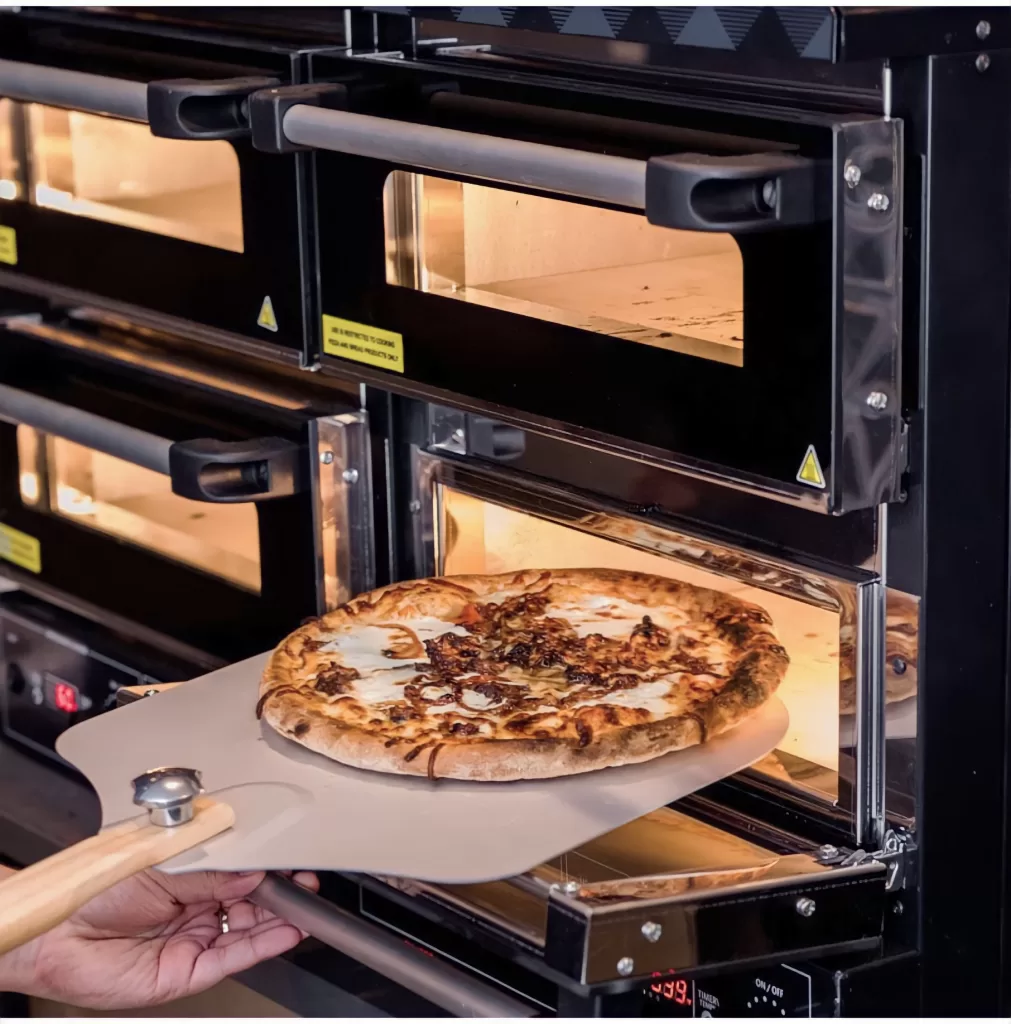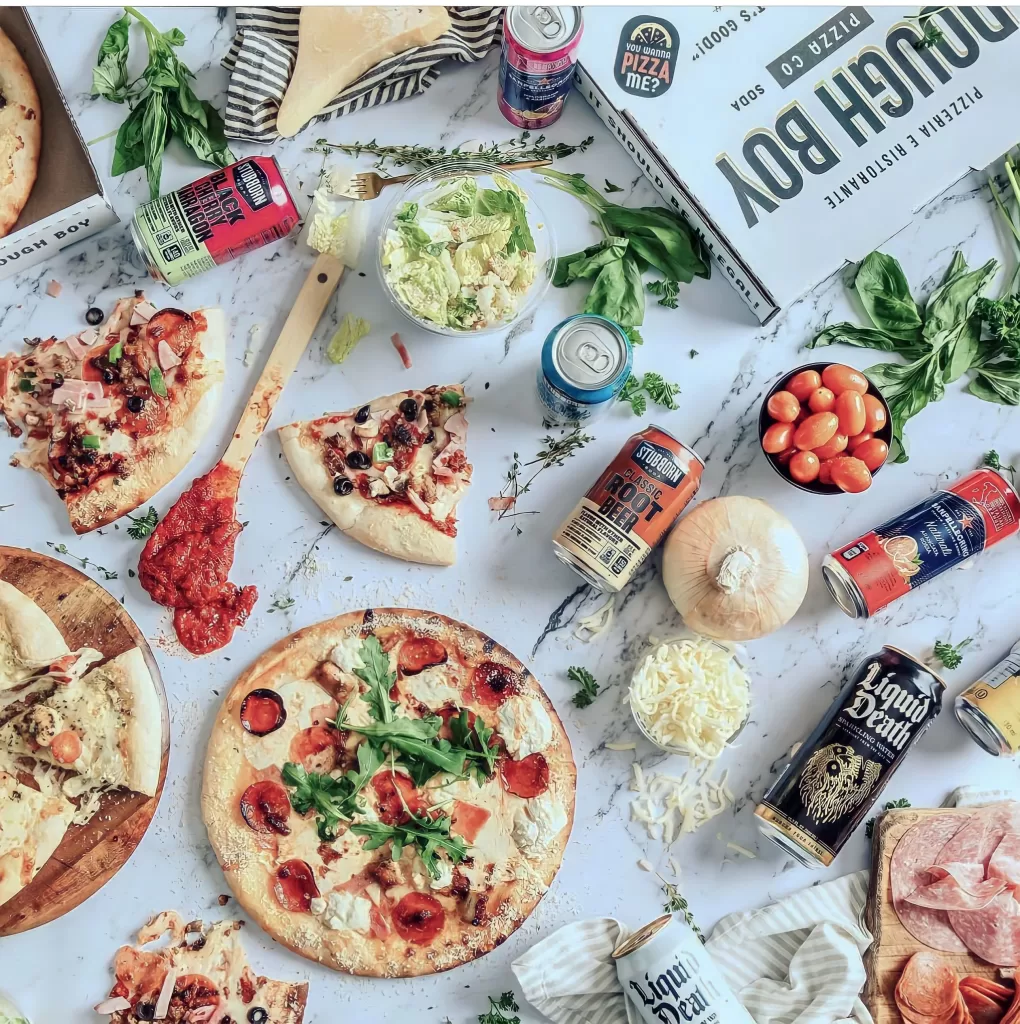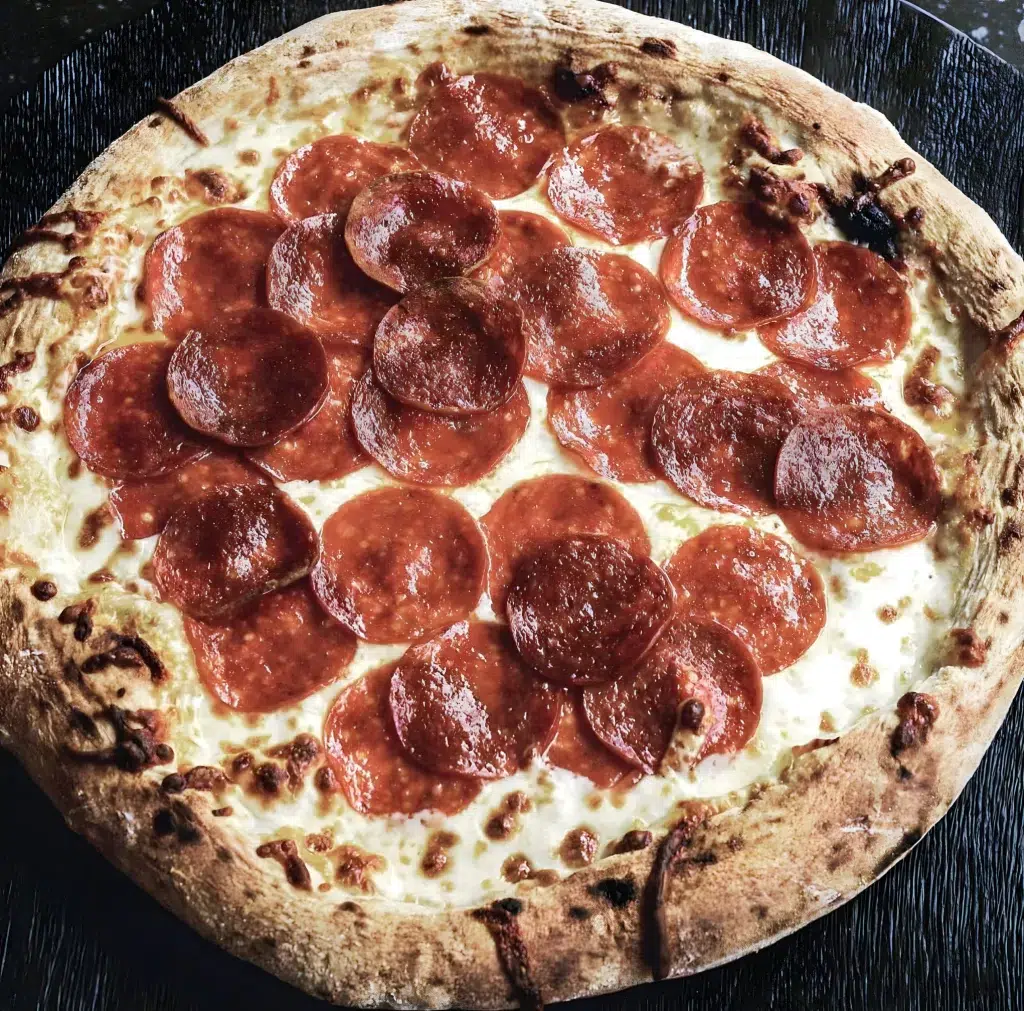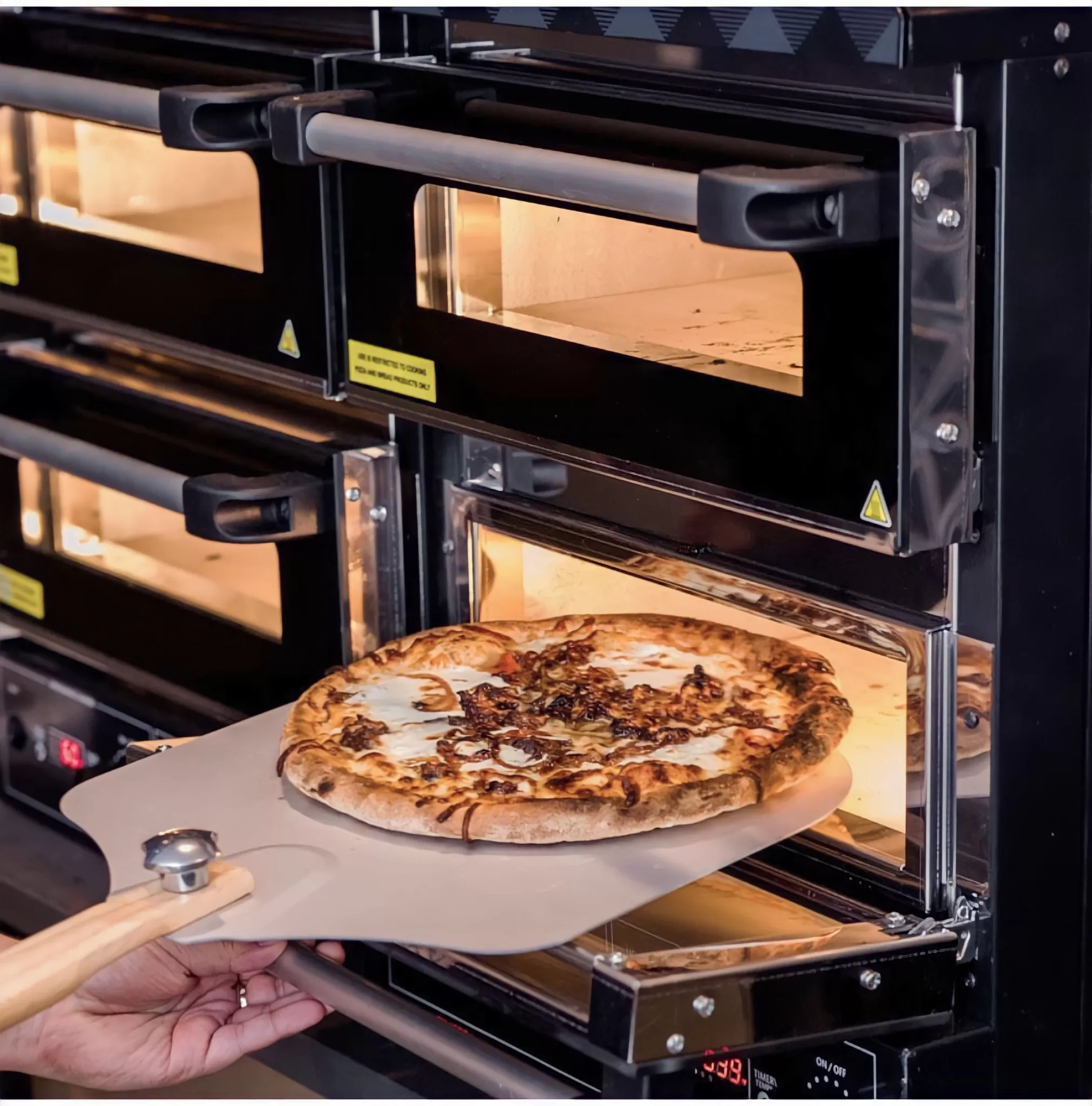
How to Optimize Your Tech-driven Pizza Concept
Time to talk tech. Many restaurants have chosen to continue to embrace technology workarounds that were put in place during the pandemic. Whether it be utilizing QR codes for menus, ordering or bill pay, we’re beginning to see these methods be incorporated in various ways to cut costs for the restaurant with convenience in mind for the tech-savvy customer.
To further streamline operations, the industry is seeing a rise in tech-driven concepts. This route can alleviate the pressures of labor shortages to some extent, while also providing convenience and efficiency in ordering. Not to mention the plus of data-driven insights at your fingertips.
If you’re looking to launch your own concept and are considering taking the tech-centric path or are interested in taking on a brand as a franchisee, this interview is catered to you.
We’ve asked Dough Boy Pizza founder Erica Barrett to shed light on the intricacies of launching a tech-driven pizza concept.
In August 2022, Barrett debuted her first Dough Boy Pizza location in Mobile, Alabama. Dough Boy is an innovative fast-casual restaurant focused on Neapolitan-style pies. Unlike your average fast-casual restaurant, Dough Boy operates without cashiers. Instead, customers order directly from electronic kiosks. The human element comes from the kitchen—firing Italian-made ovens and crafting pizzas with traditional toppings as well as boundary-pushing combinations, with mobster-themed names like the Godfather of Harlem which is made up of Alfredo sauce, shredded mozzarella, fresh garlic, chicken parmesan and topped with a parsley garnish.
In February 2023, Dough Boy secured its first operational franchisee in Decatur, Georgia. Doughboy now has three locations under its belt in less than two years.
While she is fresh to the pizza scene, Barrett is no rookie when it comes to being an entrepreneur in the food realm. She made a splash on the scene in 2010 by participating in the Lea & Perrins Shine at Dinnertime Challenge. Two years later, Barrett debuted her breakfast lifestyle brand Southern Culture Artisan Foods—which was highlighted on Oprah’s Favorite Things in 2016. The creator secured more screen time by appearing on Shark Tank (2014) followed by an appearance on CNBC’s series The Profit (2018). These accolades preceded the restaurateur’s first eatery, SOCU Southern Kitchen & Oyster Bar in 2019, just a few short years before trying her hand at the pizza business—and it proved to be as fruitful as her previous endeavors.
Barrett weighs in on the benefits to running a tech-driven pizza concept, how to best utilize employees with this model and ways to both captivate and grow your customer base through ordering platforms, social media and online platforms.

SPM: You’re no stranger to being an entrepreneur in the food space. What made you want to dive into the pizza realm?
Erica Barrett [EB]: Venturing into the pizza realm was a natural step for me because of the widespread popularity of pizza and the endless possibilities for creativity and innovation within that space. I saw an opportunity to bring a unique perspective to an already beloved food item, and the potential to carve out a niche in the market with something truly special.
SPM: Can you touch on your recipe testing process? Your selection of pies have vegan crusts and many stray from “traditional” toppings. How long does a boundary-pushing ingredient pizza stay on the menu before you can gauge its success?
EB: When it comes to developing new pizza recipes with non-traditional crusts and toppings, our process involves extensive experimentation and tasting. For vegan crusts, we carefully source and test alternative ingredients to ensure both the texture and flavor meet our standards.
As for non-traditional toppings, it’s all about balancing flavors and textures to create something unique and delicious. Our goal is to offer variety and cater to diverse dietary preferences.
As for gauging the success of a boundary-pushing pizza, we typically keep it on the menu for a certain period of time to gather feedback from customers. This helps us understand if the new creation resonates with our audience. The exact duration can vary, but we look at factors like customer feedback, sales figures, and overall reception before making decisions about whether to keep a new pizza on the menu permanently.
SPM: We know you can’t share your secret recipe, but can you give some insight behind your calculated formula regarding your first Smart Pizza Shop?
EB: Creating a successful smart pizza shop involves several key components. Firstly, it’s important to incorporate technology for online ordering, delivery optimization, and customer engagement. Utilizing data analytics to understand customer preferences and behavior can also be very beneficial. Additionally, offering unique and high-quality pizza creations while maintaining efficiency in operations is crucial. It’s all about combining convenience, quality, and innovation to provide a top-notch pizza experience.
SPM: Dough Boy is a tech-driven concept, what made you choose this route?
EB: Dough Boy has chosen a tech-driven concept to enhance customer experience, streamline operations, and stay ahead in the competitive food industry. By leveraging technology, Dough Boy aims to provide efficient service, innovative ordering methods, and data-driven insights to continuously improve its offerings. This approach not only benefits the business but also ensures that customers have a seamless and convenient experience when engaging with the brand.
SPM: What are some of the benefits of using a tech-driven concept?
EB: Dough Boy is committed to providing a cutting-edge experience for our customers. By integrating technology into our concept, we aim to streamline our processes, enhance customer convenience, and create a more engaging and interactive experience. Embracing technology also allows us to stay relevant in the ever-evolving digital landscape and meet the changing needs of our tech-savvy customers.
SPM: What would you say, if any, are the drawbacks to utilizing a tech-driven space versus utilizing employees?
EB: There are several potential drawbacks to relying solely on technology in a workspace, rather than utilizing employees. Some of these drawbacks might include a lack of human creativity and intuition, the potential for technological errors or breakdowns, and a reduction in personal interactions and relationships within the workplace. Additionally, technology can sometimes lead to job displacement, which can have broader societal and economic implications. It’s important to find a balance between leveraging technology and utilizing the unique skills and abilities of human employees.
SPM: From your experience, what does the hiring process look like for a tech-driven establishment? What are you looking for in candidates? How do you handle employee incentives for longevity? Employee growth within the company?
EB: The Dough Boy hiring process typically involves rigorous technical and culinary assessments and interviews to evaluate a candidate’s skills. I often look for candidates who not only have strong technical abilities but also demonstrate problem-solving skills, creativity, adaptability, and a passion for learning and pizza making.
When it comes to handling employee incentives for longevity, I offer competitive salaries, and opportunities for ongoing professional development, mentorship programs, and career growth paths within the company to encourage employees to stay and grow with the organization.
For employee growth within the company, Dough Boy often prioritizes continuous learning and skills development. This may include providing access to online courses, workshops, and conferences, as well as opportunities to work on challenging projects and cross-functional teams. Managers may also have regular career development conversations with employees to understand their interests and aspirations, aligning their growth with the company’s needs and opportunities.
SPM: In terms of marketing, what have you found to be the best channels to utilize? In the social media era, which avenue is worth the most investment as a restaurateur while promoting their brand/product?
EB: In today’s social media era, the best channels to utilize for marketing as a restaurateur are typically Facebook, Instagram, and potentially Twitter. These platforms allow you to visually showcase your menu, ambiance, and special promotions to a wide audience. Additionally, creating and maintaining a presence on review sites such as Yelp and Google My Business can also be very beneficial for promoting your brand and products. Lastly, considering the rise of visual content, investing in visually appealing content such as photos and videos can be worth more investment.

SPM: What advice would you give to an eager entrepreneur looking to open their first pizzeria as a tech-driven concept? Any obstacles you wish you would’ve known about or unforeseen costs? Is there a specific location or concept that would make an ideal candidate?
EB: For an eager entrepreneur looking to open a tech-driven pizzeria, there are a four key pieces of advice I can offer–
1. Embrace Online Ordering, Delivery Partnerships & Self Ordering Solutions: In today’s digital age, having an efficient online ordering system and delivery service is crucial. Investing in user-friendly equipment for ordering can make the customer experience seamless.
2. Use Technology to Improve Operations: This can streamline order management, inventory tracking, and customer data management. Additionally, this can help increase efficiency and reduce operational costs.
3. Leverage Social Media and Digital Marketing: Engage with customers through social media platforms and targeted digital marketing campaigns. Building a strong online presence can help attract and retain customers.
4. Create a Unique Customer Experience: As for potential obstacles and unforeseen costs, it’s essential to consider the initial investment in technology infrastructure, ongoing maintenance and updates, as well as staff training to handle the tech-driven aspects of the business.
In terms of the ideal location and concept, an area with a high volume of foot traffic, or situated in proximity to offices and residential areas, can be advantageous. As for the concept, a pizzeria that focuses on sustainable and locally sourced ingredients, or one that offers customizable pizza options using a high-tech ordering system, could be appealing to the modern consumer.
Ultimately, integrating technology into a pizzeria concept can offer numerous benefits, but it’s essential to carefully plan for the associated challenges and costs.
SPM: What was the catalyst for turning Dough Boy into a franchise opportunity? What does the level of involvement look like on your end?
EB: The catalyst for turning Dough Boy into a franchise opportunity was throughout my 14-year food career. I finally found a solution to a problem and that was operating restaurants in a simple and efficient way in a smart way and it really just made me excited. I felt like the idea was too good to keep to myself .I feel with Dough Boy I am 100% confident that entrepreneurs and future franchisees and current franchisees can experience success based off this model that I worked on and created,in terms of my level of involvement with Dough Boy I work on Dough Boy every day I just worked on it this weekend with the franchisee who has two locations I just set up a meeting today with another franchisee who has two locations, so I’ll probably spend about two hours on Dough Boy daily. Of course I have other concepts, but Dough Boy is a big part of my future because it’s simple, it’s easy, and it is fun to run.
SPM: What does the future look like for Dough Boy?
EB: The future of Dough Boy includes us becoming a market leader in the pizza space also being, you know, nationally and internationally recognized as a restaurant of the future–one that incorporates technology, a changing economic climate and then also being a huge competitor in the pizza space with with recipe innovations and then also considering Gen Z so we really want to cater a lot to them. We plan on opening up thousands of outlets in stores over the next 24 months and being aggressive in that arm and also just being a brand that doesn’t follow traditional restaurant rules, but does what our customers demand for us to do.
You can find our podcast with Barrett, “How Erica Built a Pizza Empire with this Smart Pizza Shop,” on Smart Pizza Marketing’s podcast channel available to listen on Spotify or by visiting smartpizzamarketing.com.

